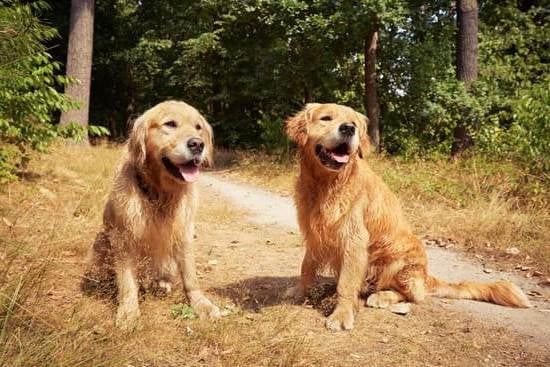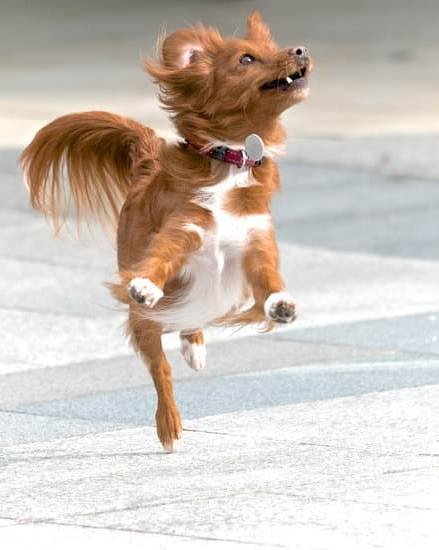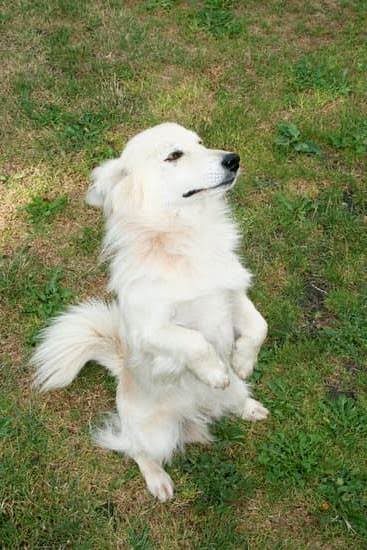Are you wondering, “How do you litter train a dog?” Litter training can be a convenient and effective way to ensure that your canine companion has a designated spot to relieve themselves indoors. In this article, we will delve into the world of dog litter training, exploring its benefits and importance in maintaining a clean and organized living environment for both you and your furry friend.
Litter training is not just about convenience; it also plays a crucial role in promoting good hygiene practices for your dog. By teaching your dog to use a litter box, you can minimize accidents around the house, reduce the risk of indoor soiling, and provide a consistent bathroom area for your pet. Additionally, litter training can be especially useful for puppies, elderly dogs, or those living in apartments or homes without easy outdoor access.
Understanding your dog’s behavior is essential when it comes to successful litter training. Some dogs may struggle with using a litter box due to various reasons such as anxiety, medical issues, or lack of proper training. By identifying these challenges and addressing them effectively, you can help your dog adapt to using a litter box seamlessly. Stay tuned as we explore the different aspects of dog litter training in the following sections.
Understanding Your Dog’s Behavior
Litter training a dog can sometimes be a challenging task, as dogs may have certain behaviors that make it difficult for them to grasp the concept. One common reason why dogs may struggle with litter training is that they are used to going potty outdoors and may not understand the transition to using a litter box indoors.
Additionally, some dogs may have anxiety or fear around using a designated area for elimination, especially if they were not properly trained as puppies.
To address these issues, it is important to start by observing your dog’s behavior and noting any patterns or cues that indicate when they need to go potty. This can help you anticipate when to guide them towards the litter box. It is also crucial to provide positive reinforcement when your dog successfully uses the litter box, such as giving them treats or praise, to encourage the desired behavior.
Another factor that may contribute to difficulties in litter training is the cleanliness of the litter box. Dogs have a strong sense of smell and may refuse to use a dirty or smelly litter box. Therefore, regularly cleaning and maintaining the litter box is essential in ensuring your dog feels comfortable using it.
Additionally, placing the litter box in a quiet and accessible location can help reduce any stress or anxiety your dog may feel while trying to use it. By understanding your dog’s behavior and addressing any underlying issues, you can effectively train them to use a litter box for elimination purposes.
Overall, patience, consistency, and positive reinforcement are key components in successfully litter training your dog. With proper guidance and understanding of your dog’s behavior, you can help them overcome any challenges they may face in adapting to this new routine.
Choosing the Right Litter Box
When it comes to litter training your dog, selecting the right litter box is crucial for their success. There are various types of litter boxes available on the market, each with its own unique features and benefits. To ensure that your dog takes well to litter training, it’s important to choose a litter box that suits their needs and preferences. Here are some options to consider:
- Traditional Litter Box: This type of litter box is the most common option and is typically rectangular in shape with low sides for easy access. They come in various sizes to accommodate dogs of different breeds and sizes.
- Top-Entry Litter Box: Top-entry litter boxes can be ideal for dogs who like privacy when going potty. The top cover helps contain any messes and odors, making it a great choice for sensitive pups.
- Automatic Self-Cleaning Litter Box: For busy pet owners, an automatic self-cleaning litter box can be a convenient option. These boxes use sensors to detect when your dog has used the bathroom and automatically scoop away waste into a separate compartment.
- Open-Air Litter Boxes: Open-air litter boxes provide ample space for larger dogs or canines who may feel claustrophobic in enclosed spaces. They also allow for easy access and maneuverability.
Selecting the right litter box for your dog involves considering factors such as their size, age, breed, and personal preferences. Some dogs may prefer covered boxes for added privacy while others may feel more comfortable with open-air designs. It’s essential to observe your dog’s behavior and habits to determine which type of litter box would best suit them.
In addition to choosing the right type of litter box, you should also consider the material of the box itself. Some dogs may have sensitivities or allergies to certain materials, so opting for non-toxic and hypoallergenic options is recommended. Ultimately, a comfortable and inviting litter box will encourage your dog to use it regularly and successfully transition to being fully litter trained.
Selecting the Right Litter
When it comes to litter training your dog, selecting the right litter is crucial for success. With a variety of options available on the market, it’s important to choose one that not only appeals to your dog but also encourages them to use the litter box consistently. Here are some popular types of litter and their benefits for litter training:
- Clumping Litter: This type of litter forms into solid clumps when wet, making it easier to clean up after your dog. It’s ideal for dogs who prefer a more traditional texture.
- Pellet Litter: Made from compressed sawdust or recycled paper, pellet litter is absorbent and easy to clean. It can help reduce tracking around the house.
- Grass or Natural Fiber Litter: For eco-conscious pet owners, grass or natural fiber litter is a sustainable option that is safe for both your dog and the environment. It often has odor control properties as well.
Each type of litter has its own advantages and disadvantages, so it may require some trial and error to find the best fit for your dog. Consider factors such as your dog’s preferences, any allergies they may have, and how easy the litter is to clean and maintain.
Here Are Some Tips for Choosing the Right Litter
- Consult with your veterinarian: Some dogs may have sensitivities or allergies to certain types of litter, so it’s always best to seek advice from a professional before making a decision.
- Consider ease of cleaning: Choose a litter that will make clean-up simple and hassle-free. Clumping litters are often preferred for their convenience.
- Test out different options: If your dog seems hesitant about using a particular type of litter, try switching it up until you find one that they feel comfortable with.
By carefully selecting the right litter for your dog’s needs and preferences, you’ll be one step closer to successful litter training. Remember, patience and consistency are key when teaching your furry friend how to use the designated area for potty needs.
Setting Up the Litter Box
Next, ensure that the size of the litter box is appropriate for your dog. Ideally, it should be large enough for your dog to comfortably turn around in and do their business without feeling cramped.
Additionally, make sure the sides are low enough for easy access but high enough to contain any messes. Consider getting a litter box with a removable rim or entrance if you have a small dog or a senior dog who may have trouble climbing into a higher-sided box.
Introduce your dog to the litter box gradually to help them get familiar with it. Start by placing the empty litter box in the chosen location and let your dog inspect it at their own pace. You can also place some of their favorite toys or treats near the litter box to create positive associations with the area.
Once they seem comfortable around the box, add some clean litter into it. Encourage your dog to enter and explore the litter box by offering praise and rewards when they do so. With patience and consistency, most dogs can be successfully trained to use a litter box for elimination purposes.
Training Your Dog
Establish a Routine
Consistency is key when it comes to litter training your dog. Establishing a routine will help your furry friend understand where and when they are supposed to go potty. Take your dog to the litter box after meals, playtime, and upon waking up in the morning. Praise and reward them every time they use the litter box correctly to reinforce good behavior.
Use Positive Reinforcement
Positive reinforcement is a powerful tool when it comes to training your dog. Whenever your dog successfully uses the litter box, shower them with praise, treats, or even a favorite toy as a reward. Dogs respond well to positive affirmations, and this will encourage them to continue using the litter box consistently.
Be Patient and Consistent
Litter training a dog can take time, so it’s important to be patient and consistent throughout the process. Avoid scolding or punishing your dog if they have accidents outside of the litter box. Instead, gently redirect them to the correct spot without any negative reinforcement. With patience and consistency, your dog will eventually learn where they should go potty.
By following these tips and techniques for teaching your dog to use the litter box consistently, you can make the training process smoother and more successful. Remember that each dog is unique and may require different approaches, so be attentive to your pet’s needs and adjust your training methods accordingly. With time and dedication, you’ll have a well-trained pup who knows exactly where to do their business.
Addressing Challenges
When it comes to litter training your dog, there are some common challenges that pet owners may face along the way. Understanding these issues and knowing how to address them is crucial in ensuring successful litter training for your furry friend. Here are some of the most common problems and solutions for dogs who are struggling with litter training:
Accidents Outside the Litter Box
One of the most common problems pet owners encounter during litter training is finding accidents outside of the designated area. If your dog consistently goes potty outside the litter box, it could be due to a few reasons such as inadequate training, medical issues, or stress. To address this issue, make sure to supervise your dog closely, give positive reinforcement when they use the litter box correctly, and consult with a veterinarian if you suspect any underlying health problems.
Refusal to Use the Litter Box
Some dogs may simply refuse to use the litter box altogether, which can be frustrating for pet owners. In this case, it’s essential to evaluate if there are any issues with the type of litter or litter box being used. Try experimenting with different types of litter and boxes to see what your dog prefers. Additionally, providing positive reinforcement and patience during training sessions can help encourage your dog to use the designated area for pottying.
Fear or Anxiety Around the Litter Box
In some instances, dogs may develop fear or anxiety surrounding their litter box, leading them to avoid using it entirely. To address this issue, create a positive environment around the litter box by keeping it clean, placing it in a quiet and accessible location, and offering treats or praise when your dog uses it correctly.
Gradually desensitize your dog by associating positive experiences with the litter box to help alleviate any fears or anxieties they may have developed. By addressing these common challenges head-on and implementing appropriate solutions, you can help your dog overcome any obstacles they may face during the litter training process.
Maintenance and Cleaning
Litter training a dog can be a beneficial and convenient solution for pet owners who may not have access to outdoor spaces or struggle with housebreaking challenges. By providing a designated area for your dog to relieve themselves indoors, you can maintain a clean living environment and prevent accidents from happening around the house. However, one of the key aspects of successful litter training is ensuring that the litter box is well-maintained and kept clean at all times.
Regular maintenance and cleaning of the litter box are essential to encourage your dog to consistently use it for their bathroom needs. It is crucial to scoop out waste daily, replace soiled litter regularly, and thoroughly clean the box with pet-safe disinfectants on a weekly basis. This routine not only prevents odors from building up but also provides a hygienic environment that promotes your dog’s continued use of the litter box.
Additionally, keeping the litter box in a quiet and accessible location, away from where your dog eats or sleeps, will further encourage them to use it appropriately. Remember to monitor your dog’s behavior closely during the initial stages of litter training, as any signs of reluctance or discomfort should be addressed promptly.
With patience, consistency, and proper maintenance of the litter box, you can successfully teach your dog how to use it effectively, creating a harmonious living space for both you and your furry friend.
Frequently Asked Questions
Is Litter Box Training a Dog a Good Idea?
Litter box training a dog can be a good idea for pet owners who live in apartments or have limited outdoor space for their pets to relieve themselves. It can provide convenience and flexibility for both the owner and the dog.
How Long Does It Take to Litter Train a Dog?
The time it takes to litter train a dog can vary depending on the individual dog’s age, breed, and temperament. On average, it may take anywhere from a few days to a few weeks for a dog to get accustomed to using a litter box consistently.
What Do You Put in a Puppy Litter Box?
When setting up a puppy litter box, it’s important to choose an appropriate size box that is easy for the puppy to access. You should use absorbent material like newspaper, pee pads, or specially designed dog litter. Additionally, placing some of the puppy’s waste in the box can help encourage them to use it for elimination.

Welcome to the blog! I am a professional dog trainer and have been working with dogs for many years. In this blog, I will be discussing various topics related to dog training, including tips, tricks, and advice. I hope you find this information helpful and informative. Thanks for reading!





